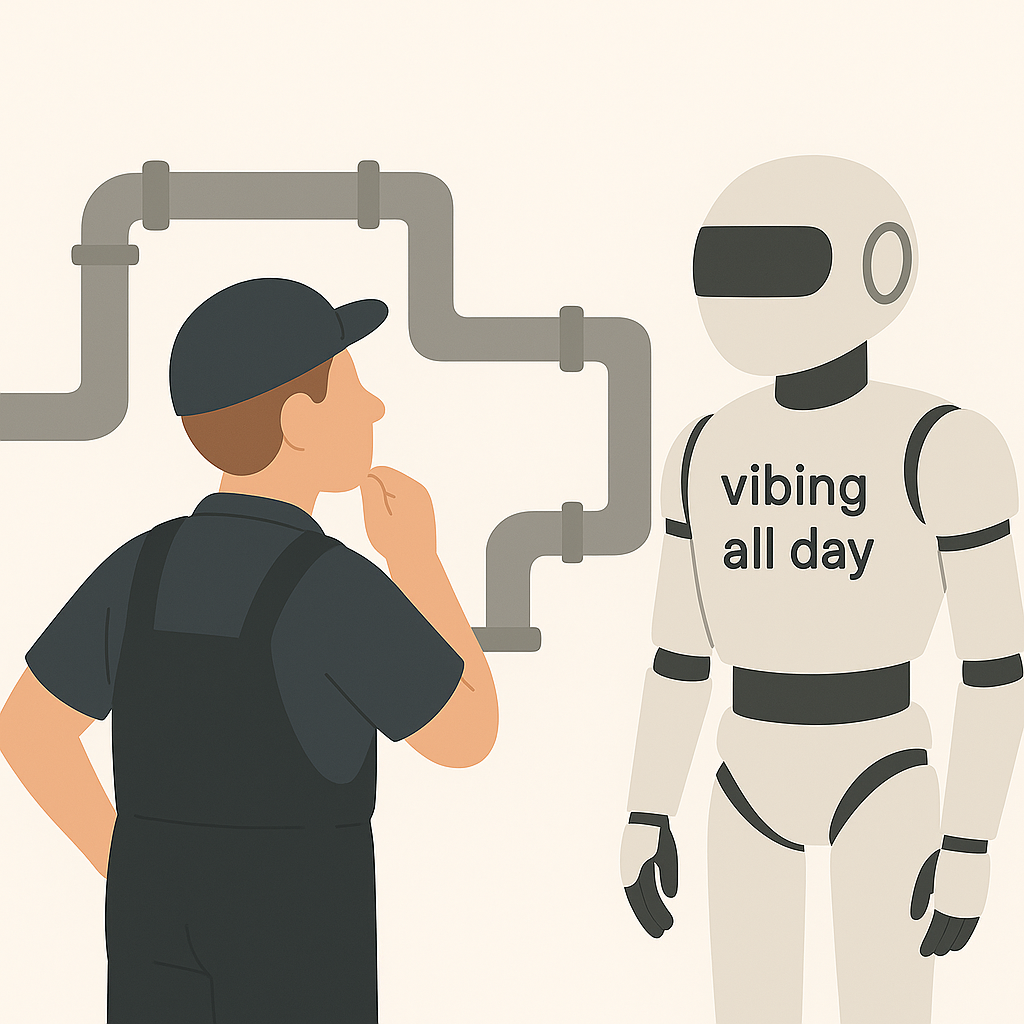CI CD in the Age of Vibe Coding and AI Co-Pilots: Why It Matters

Let’s be honest: we’re not coding like we used to. The days of carefully-crafted architecture diagrams, multi-week design docs, and “measure twice, cut once” development cycles are on the decline. Today, your junior dev just pushed to main with a commit message that reads “hope this works lol”, and the codebase is held together by interfaces and good vibes. Meanwhile, GenAI is auto-suggesting entire functions based on a comment and a prayer. We are now even transitioning to an era of Agentic programming, removing humans in the loop (or shifting right).
Welcome to the vibe coding era.
But here’s the thing: as we loosen our grip on traditional process, we need strong automation and guardrails more than ever and that’s exactly where CI/CD (Continuous Integration and Continuous Deployment) becomes non-negotiable.
Who’s Watching the Merge?
The explosion of AI-assisted tools has made it absurdly easy to write code. This is good for productivity, sure—but also a recipe for shipping bugs at machine speed. You’ve got devs generating entire classes with one-liners like “create an API wrapper for Stripe”, and Copilot just goes brrr.
Yet AI has no idea about your edge cases, your weird database constraints, or that legacy internal tool nobody wants to touch. So without CI/CD pipelines validating, testing, and sanity-checking those commits, you’re basically letting a robot intern deploy to prod after lunch.
CI/CD offers the premise that just because code is easy to write, it’s not easy to break things.
Vibe-Driven Development Meets Reality Checks
“Move fast and break things” became “move fast and pray staging catches it,” which is now just “move fast.” The more intuitive and playful our development gets, the more crucial it is to have pipelines that catch us when we stumble.
With proper CI/CD:
- Unit tests actually run (and fail loudly).
- Linting stops that one developer who refuses to use semicolons.
- Integration tests verify your Copilot-generated code doesn’t POST to the wrong endpoint.
- Deployments can be staged, canaried, or gated behind review workflows.
In short, CI/CD lets us vibe responsibly.
AI Won’t Save You from Yourself
OpenAI’s own researchers noted that AI models can hallucinate code that looks syntactically perfect but does the wrong thing entirely. One study found that developers who used AI pair-programming tools were more likely to write insecure code unless it was validated.
CI/CD is how you plug that hole.
CI/CD for AI Systems?
If you’re building or deploying AI models, CI/CD isn’t just for your app code anymore. Modern MLOps pipelines integrate CI/CD to:
- Validate model performance metrics before deployment
- Automatically retrain on new data with version tracking
- Test data pipelines for consistency and schema changes
- Roll back a model when needed
Think of it as DevOps for your AI brain. The more experimental and fast-moving your AI workflows are, the more you need automation to keep things reproducible, safe, and observable.
Final Thoughts…
We’re all building faster, typing less, and vibing harder with each new LLM release. But in this era of speed and fluid creativity, CI/CD is the last line of defense.
If you want to harness the magic of AI-accelerated coding without waking up to a production mess, invest in CI/CD pipeline.
Make it fast, make it visible, and most of all—make it default.